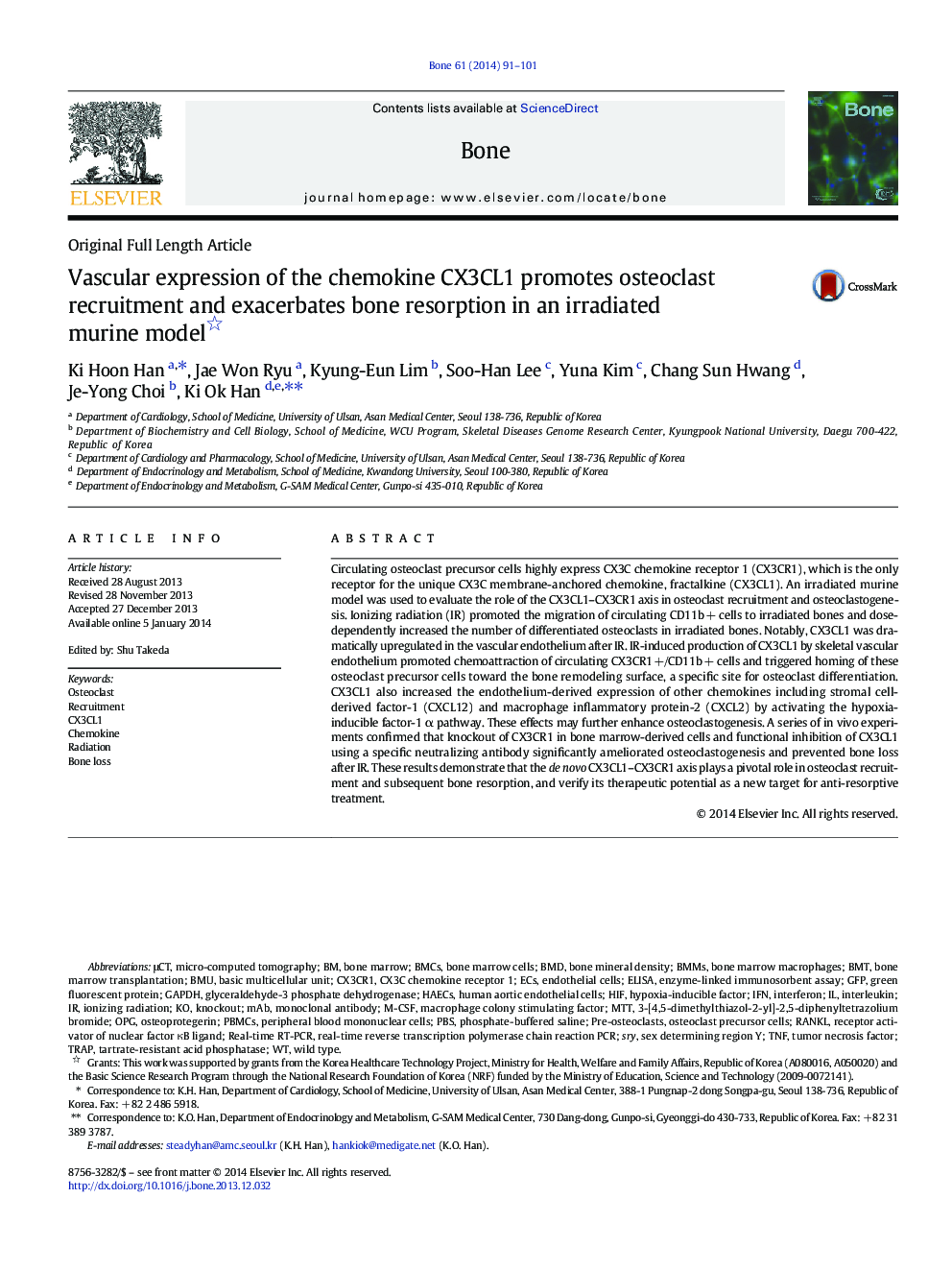| Article ID | Journal | Published Year | Pages | File Type |
|---|---|---|---|---|
| 5890255 | Bone | 2014 | 11 Pages |
Abstract
Circulating osteoclast precursor cells highly express CX3C chemokine receptor 1 (CX3CR1), which is the only receptor for the unique CX3C membrane-anchored chemokine, fractalkine (CX3CL1). An irradiated murine model was used to evaluate the role of the CX3CL1-CX3CR1 axis in osteoclast recruitment and osteoclastogenesis. Ionizing radiation (IR) promoted the migration of circulating CD11b + cells to irradiated bones and dose-dependently increased the number of differentiated osteoclasts in irradiated bones. Notably, CX3CL1 was dramatically upregulated in the vascular endothelium after IR. IR-induced production of CX3CL1 by skeletal vascular endothelium promoted chemoattraction of circulating CX3CR1 +/CD11b + cells and triggered homing of these osteoclast precursor cells toward the bone remodeling surface, a specific site for osteoclast differentiation. CX3CL1 also increased the endothelium-derived expression of other chemokines including stromal cell-derived factor-1 (CXCL12) and macrophage inflammatory protein-2 (CXCL2) by activating the hypoxia-inducible factor-1 α pathway. These effects may further enhance osteoclastogenesis. A series of in vivo experiments confirmed that knockout of CX3CR1 in bone marrow-derived cells and functional inhibition of CX3CL1 using a specific neutralizing antibody significantly ameliorated osteoclastogenesis and prevented bone loss after IR. These results demonstrate that the de novo CX3CL1-CX3CR1 axis plays a pivotal role in osteoclast recruitment and subsequent bone resorption, and verify its therapeutic potential as a new target for anti-resorptive treatment.
Keywords
GAPDHPBMCsCX3CR1HIFBMTTRAPCX3C chemokine receptor 1OPGBMDRANKLBMCsM-CSFGFPsex determining region YCX3CL1PBSTNFmAbBMUHAECsμCT3-[4,5-dimethylthiazol-2-yl]-2,5-diphenyltetrazolium bromideBMMsECsMTTMonoclonal antibodyBone lossOsteoprotegerinRecruitmentOsteoclasttartrate-resistant acid phosphataseinterferonIFNinterleukinionizing radiationBone mineral densityELISAEnzyme-linked immunosorbent assayMicro-computed tomographyReal-time RT-PCRperipheral blood mononuclear cellsBone marrow cellsEndothelial cellshuman aortic endothelial cellsSryHypoxia-inducible factormacrophage colony stimulating factortumor necrosis factorBone marrow macrophagesPhosphate-buffered salinebone marrowknockoutwild typebasic multicellular unitRadiationgreen fluorescent proteinBone marrow transplantationChemokineglyceraldehyde-3 phosphate dehydrogenaseReceptor activator of nuclear factor κB ligand
Related Topics
Life Sciences
Biochemistry, Genetics and Molecular Biology
Developmental Biology
Authors
Ki Hoon Han, Jae Won Ryu, Kyung-Eun Lim, Soo-Han Lee, Yuna Kim, Chang Sun Hwang, Je-Yong Choi, Ki Ok Han,
